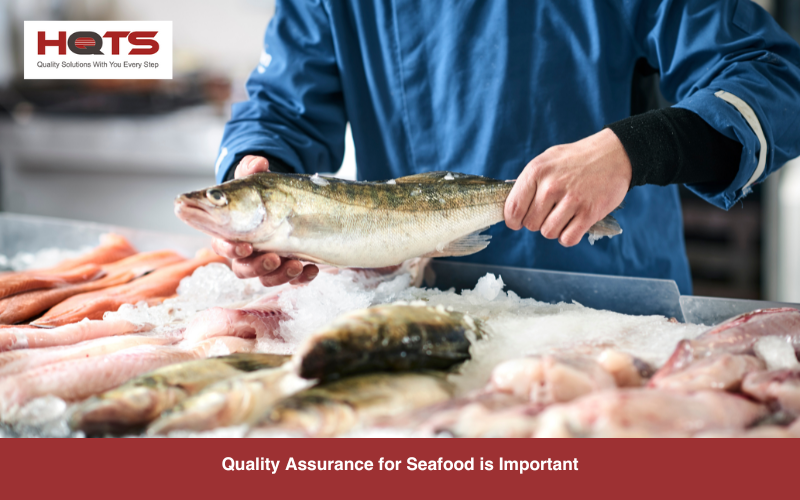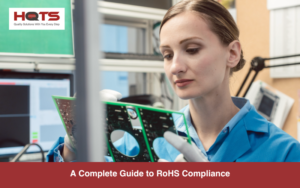Seafood is one of the most popular products being traded all over the world, making it flagship items for import and export in many countries especially in Southeast Asia. Hence, the quality of seafood is vitally important that requires a lot of protocols to preserve it. This article will indicate some quality inspections that are usually applied in seafood industry.
Why is quality control for seafood important?
Ensuring the quality of seafood through inspections serves several crucial purposes:
- Safeguarding health: Seafood, being perishable, is vulnerable to contamination by harmful substances and microorganisms. Inspections identify hazards, meet safety standards, and reduce the risk of foodborne illnesses, thereby protecting consumer well-being.
- Inspiring trust: Consumers seek assurance that the seafood they consume is safe, fresh, and of high quality. Inspections foster trust, instill confidence in the seafood industry, and promote customer satisfaction, leading to repeat business.
- Regulatory adherence: The seafood industry must comply with diverse regulations concerning safety, labeling, and traceability. Inspections ensure adherence to these standards, ensuring that seafood meets prescribed criteria and sidesteps legal and regulatory complications.
- Curbing fraud: Fraudulent practices, such as mislabeling species or origin, undermine industry integrity. Inspections, including species identification tests, detect and prevent seafood fraud, ensuring consumers receive the expected product without misleading labeling or deceptive marketing tactics.
- Preserving freshness and quality: Effective handling and storage are crucial to maintaining the freshness and quality of seafood. Inspections encompass sensory evaluation and temperature monitoring, guaranteeing that seafood retains its nutritional value, flavor, and texture throughout the supply chain. This provides consumers with a positive eating experience.
- Facilitating trade: Import regulations and standards for seafood vary across nations. By adhering to quality inspections, exporters meet these requirements, enabling market access and facilitating international trade. Complying with quality standards further enhances the reputation and competitiveness of seafood exporters in global markets.
What are common quality inspections for seafood?
Typical inspections for seafood encompass evaluating different aspects of the product to ensure its safety, freshness, and adherence to regulatory standards. The following assessments are frequently conducted:
- Sensory assessment: Evaluating the seafood’s appearance, smell, and taste is part of sensory assessment to determine its quality. Trained inspectors analyze color, texture, odor, and flavor attributes to detect indications of spoilage or contamination.
- Temperature management: Maintaining appropriate storage and transportation temperatures is crucial for perishable seafood. Inspections involve monitoring and confirming that the seafood has been stored, handled, and transported under optimal temperature conditions to sustain its freshness.
- Microbiological testing: Detecting harmful bacteria like Salmonella, Listeria, or Vibrio through microbiological testing ensures seafood meets safety standards, devoid of pathogens that can cause foodborne illnesses.
- Chemical and toxin analysis: Testing seafood for chemical residues, such as antibiotics, pesticides, heavy metals, and toxins, guarantees its freedom from harmful substances and compliance with regulatory limits.
- Species verification: Authenticating the seafood’s identity is accomplished through species identification testing. Techniques like DNA testing confirm whether the labeled species corresponds accurately to the actual species of the seafood.
- Evaluation of packaging and labeling: Inspections extend to packaging and labeling of seafood products. Inspectors verify the integrity of packaging materials to uphold product quality and check for accurate labeling, including correct product name, origin, weight, storage instructions, and allergen information.
- Traceability and record scrutiny: Inspections may involve examining documentation and records associated with the seafood, such as catch certificates, harvest information, processing records, and product traceability. This ensures traceability back to the source and verifies compliance with regulatory requirements.
To view our sample report for seafood, click here.
How to conduct quality assurance for your seafood products
Not many companies and manufacturers have enough capabilities to cover all necessary inspection activities due to the lack of manpower, expertise, and experience. Thus, a third-party quality control service provider is an ideal option to balance between quality, expense, and convenience. A professional inspection service provider like HQTS can offer comprehensive service for inspection, as well as factory audit and ESG services to ensure you select the best suppliers.
If you have any concerns about the quality of your seafood products, contact us today for consultancy.





